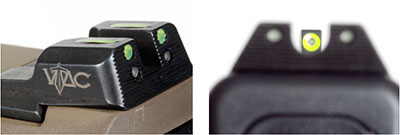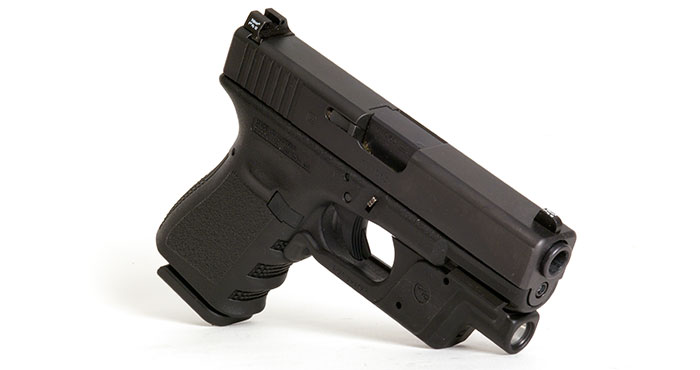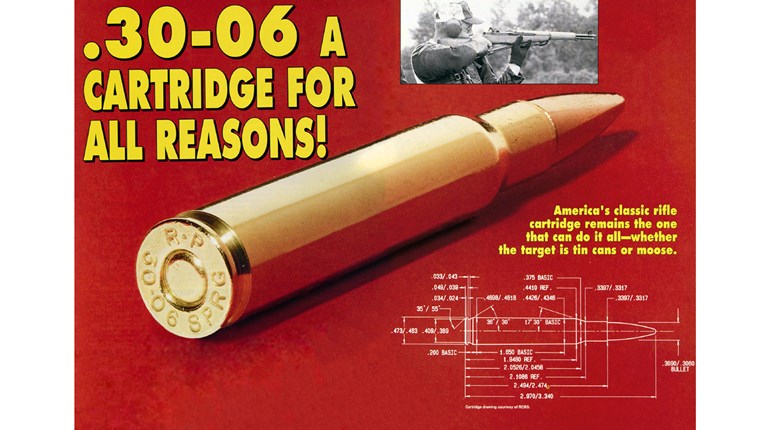
Most serious gun guys spend time training with their carry gear. We practice the draw until our first shot on target is lightning fast. We can double tap multiple targets with Flash-like speed and reloads are so fast the eye can’t follow. But, we do it all in good light.
The sad truth is the bad guy’s natural habitat is the shadows of the night, and most gunfights happen in darkness or poor lighting. It doesn’t matter how fast or accurately you can shoot under good conditions—if you can’t see your sights or are dealing with less-than-optimum light, you may have the wrong skills and the wrong gear.
So how do you learn what you need for a low- or no-light fight? Well, most ranges close at dusk and shooting at night in your backyard might lead to a SWAT team visit, but there is a way.
The Smith & Wesson IDPA Indoor Championships are held every year in February at the Smith & Wesson indoor range in Springfield, MA. It’s not your typical IDPA match, because it is entirely indoors and all of the shooting is performed in low- or no-light situations. Regardless of what you may think about IDPA and its endless rules, this match may well be the best training venue available for anybody who carries a handgun for self-defense.

Not only will you be able to shoot some very unique and often innovative stages, but you will also do so under the stress of competition and the pressure of the timer. It’s far better to discover the deficiencies in your gear, skills and techniques here, where failure will only earn “procedural penalties” from a gleeful Safety Officer and the mocking scorn of your buddies. Painful as that may be, I suspect it is preferable compared with a ride to the hospital or worse in a real-life scenario. I have not discovered any better opportunity to learn about problems you didn’t know you had.
I recognize competing in the match is not possible for every shooter, so I would like to share a few of my self-defense insights learned in five years of shooting this competition.
Training
It might be tough, but try to find a way to train under poor light conditions and/or in darkness. There really is no substitute. Using different lighting situations will help prepare you mentally for real-life self-defense situations. Shoot some of the drills with a flashlight and some without.

Shooting in poor or no light is a lot more than just having trouble seeing the sights or the target. By training in adverse lighting conditions, you can identify areas of your skills and pieces of your gear that need improvement. Also, consider you may have to run your gun essentially blind—you must be able to clear malfunctions, reload and operate the handgun without being able to see it.
One more thing, and this is going to be controversial: I believe you should spend some amount of time training at point/instinctive shooting. It’s out of vogue right now, but back in the day even the military taught instinctive shooting. Pointing a handgun is not unlike pointing a finger or a shotgun. This discipline can be a learned skill—one that could be useful in certain situations. There are times when it’s difficult to see the sights, yet you still have to defend yourself. Training for point shooting prepares you for such situations.
I have a buddy who trains police officers in a heavily populated East Coast state. He told me when encounters occur fast and close, all of his students forget to use their sights—even the most highly trained officers. But, if you train regularly at point shooting, muscle memory may save the day and keep your shots on target.
Sights
I absolutely believe in night sights on a carry handgun, but consider a few things here. Night sights are only good if you have an identifiable target. That means there must be enough ambient light to confirm a threat. Also, if you are using three dots that all look the same (common with a lot of night sights on the market), your sight picture can become very confusing in low light and may result in improper sight alignment. Yes, you can sort it out by watching the movement and the position of the dots, but that takes time. Under duress, you may not have the luxury of time.

A better option is to have night sights with contrasting colors and/or shapes. Other possibilities include rear sights with a bar, or something other than two dots that look identical to the front. If you use a flashlight (more on that later) and hold it in front of the gun so no light is shining on the sights, most will turn to silhouettes. Night sights may retain a bit of luminescence, but even that will fade quickly as your eyes adjust to the light, so you can’t depend solely on tritium.
Moreover, in poor light our eyes dilate, resulting in changes to our vision capability, including depth of focus. This is particularly true as we age and our eyes lose much of their ability to work in the dark.

One thing that helps tremendously is a larger gap in the rear-sight notch so you have a lot of space on both sides of the front sight when they are properly aligned. Pick a large front sight you can see clearly and use a big gap on the rear sight so you can center it with ease. Don’t worry about accuracy—your eye will subconsciously align the front post in the center of the gap.
Finally, install a laser sight on all your defensive guns. Choose an intuitive model you can turn on without thinking. Most Crimson Trace lasers are activated by gripping the gun, so they come on when you hold the pistol—it doesn’t get any more intuitive than that. My Glock G23 has a new Green Guide Rod Laser by LaserMax. It turns on by pushing a switch (actually, the take-down lever) on the side of the pistol. That’s right under my finger when it’s off the trigger, so when I raise the gun, activation is easy, fast and intuitive.
Although the DP in IDPA stands for defensive pistol, IDPA does not allow laser sights in competition. Why? Well, the most common reason I am given is because lasers wouldn’t be fair. In a fight for my life, “fair” is way down on my list of important aspects. Like they say, if you fight “fair,” your tactics stink. There have been a few stages at the Smith & Wesson IDPA Indoor Nationals where a “stage” gun with a laser was present, and it’s amazing how much easier it becomes to hit a target in low light when a laser sight is available. The more I train with lasers, the more I am convinced they are essential on a carry gun.

Lights
If you are serious about self-defense, you recognize the need to have a flashlight with you at all times. This goes way beyond identifying bad guys in the dark. It will help you escape a burning building or a crashed vehicle when the lights are out. A flashlight is very useful in a dark parking garage or a poorly lit alley. But trying to shoot with a hand-held flashlight, unless you train often, is a lot easier in theory than reality.
There are multiple ways to hold a flashlight when shooting a handgun. I have encountered them all during various instructional classes and many instructors insist their method is the one true way. For me, none is ideal. The flashlight is another thing you have to think about and spend time deploying. It’s easy to drop, and difficult to hold so it points at the same thing as the firearm. No matter what the technique, I find there is a compromise built in—either the light is difficult to control, or I have to compromise my gun grip. That means shooting one handed, or at best with diminished support from my weak hand.

I think it’s far better to have a weapon-mounted light. You draw it with the pistol, it points where the gun points and you can use the same grip you use in training. These are important factors in a life-or-death situation, when your brain will be in survival mode and your hands turn into uncoordinated, useless flippers.
The downside? Well, it means the gun is pointed wherever the light is pointed, but it seems to me you do the same thing with a hand-held flashlight using the techniques taught for shooting. I think the solution is pretty obvious. If you’re doing something other than fighting and need a light, use your hand-held flashlight. If you are fighting, use the weapon-mounted light.

When picking any light for self-defense, remember the KISS principle: keep it simple, stupid. Pick a high-quality light with an intuitive on/off switch. Forget all the gimmicks. The last thing you need to be doing in a self-defense situation is leafing through a menu of functions. During one no-light stage at the match, I bumped something on the light and it switched to SOS mode. It was tough trying to acquire the target, align the confusing 3-dot night sights and break a clean shot during the momentary flashes of light. Then the light went out completely. It seems it was programmed with a 5-second blackout between SOS sequences. You may not think that’s a long time, but it’s damn near an eternity in competition—in a fight, it might introduce you to eternity.
IDPA does not allow weapon-mounted lights, either. Again, I am told it’s unfair. Another argument is “nobody carries a gun with a light, they are too big and bulky and don’t fit in the holster.” I suppose some are, so leave them for home defense. Plenty of others, like the Crimson Trace Lightguard, carry well in a holster.

Rigs
I have Crimson Trace Lightguard units on two of my carry guns: a Glock G23 and a Smith & Wesson M&P. Both also have lasers and night sights. Consider the recently introduced Crimson Trace Rail Master Pro. This unit has an adjustable laser and a 100-lumen light in a small, rugged package that would work well for both a bedside gun and concealed carry. I have one on a SIG Sauer P226 X5 Tactical, and I use a Blackhawk Omega VI Universal Ambidextrous Drop Leg Holster for this rig. I removed all the extra stuff and just carry the holster on my belt. It works great for guns with most rail-mounted lights and lasers, and I have used it for competition at the Crimson Trace Midnight 3-Gun Invitational. While a bit bulky, it hides just fine under a jacket for concealed carry.
If you find yourself defending against an attack after sunset—or in any other type of low- or no-light situation—follow these suggestions and you won’t be in the dark on how to defend yourself. Train under all conditions, including no light, when you can, and outfit your firearms for low-light conditions, because you never know when you’ll need that extra bit of light.



































